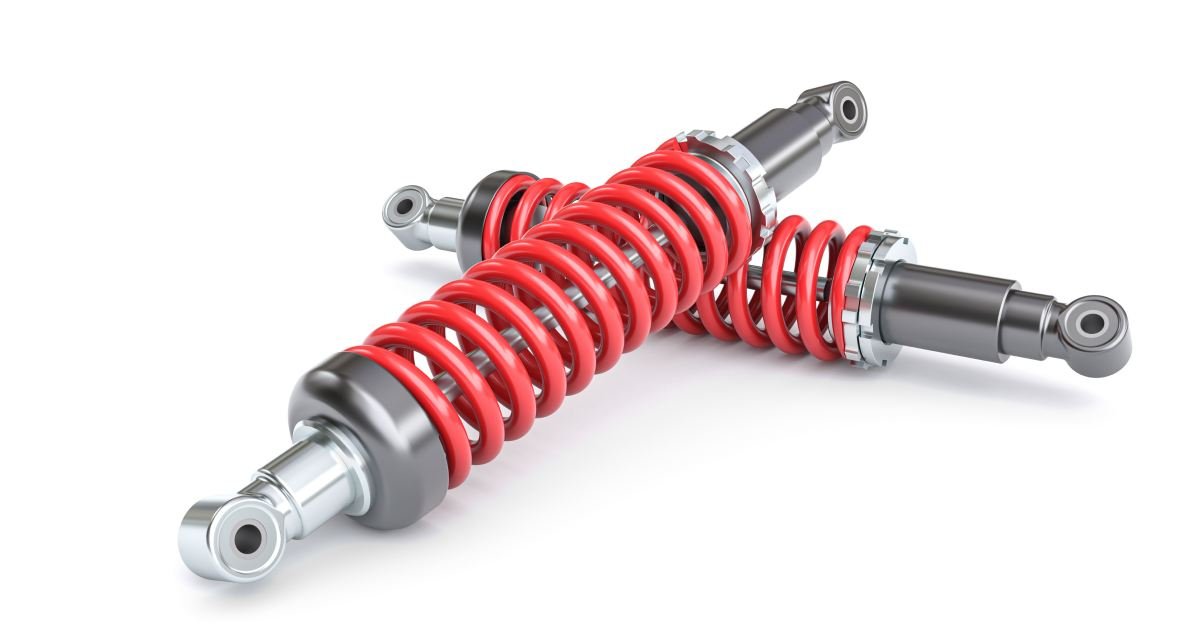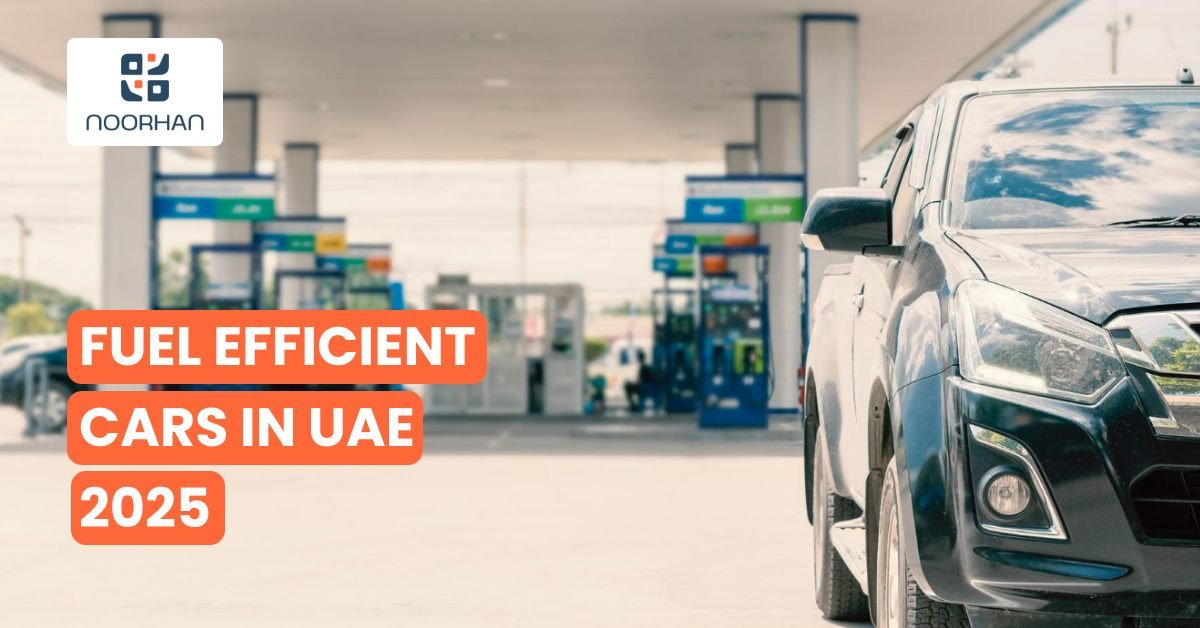-
Shock Absorbers in Desert ConditionsShock Absorbers in Desert Conditions
-
10 Warning Signs10 Warning Signs
-
Economic ImpactEconomic Impact
-
UAE RegulationsUAE Regulations
-
Maintenance ScheduleMaintenance Schedule
-
Cost BreakdownCost Breakdown
-
Service CentersService Centers
-
TroubleshootingTroubleshooting
-
FAQsFAQs
-
Action PlanAction Plan
Your car’s shock absorbers work harder in the UAE than almost anywhere else in the world. Between extreme heat that regularly exceeds 45°C, sandy conditions, and high-speed highway driving, these critical components face accelerated wear that can compromise both safety and fuel efficiency.
Most drivers don’t think about shock absorbers until something goes wrong. By then, you might already be facing increased fuel consumption, premature tire wear, and safety risks. With fuel prices at AED 2.92 per litre for Special 95 (January 2025), worn shocks that reduce fuel efficiency by 5% cost the average driver AED 400-500 annually in wasted fuel alone.
This guide helps UAE drivers identify failing shock absorbers before they become dangerous or expensive. Whether you commute daily in Dubai, manage a fleet in Abu Dhabi, or enjoy weekend desert drives, understanding these warning signs could save you money and keep you safer on the road.
Understanding Shock Absorbers in Desert Conditions
Shock absorbers control your vehicle’s spring movement, converting kinetic energy into heat through hydraulic fluid resistance. In the UAE’s desert climate, this basic function faces unique challenges that accelerate wear compared to temperate regions.
When ambient temperatures reach 50°C, shock absorber body temperatures can exceed 80°C during normal driving. This extreme heat causes hydraulic fluid to thin, reducing damping effectiveness. The constant thermal cycling between scorching days and cooler nights also accelerates seal degradation, leading to premature failure.
Sand and dust present another regional challenge. Fine desert particles infiltrate shock absorber seals, causing internal wear. This is particularly problematic for vehicles frequently driven on unpaved roads or during sandstorms. The abrasive nature of desert sand gradually wears away protective coatings and seals, reducing component lifespan.
Modern vehicles sold in the UAE often feature upgraded suspension components designed for these conditions. Gas-charged shocks, increasingly standard in new vehicles, offer better heat dissipation but still require vigilant maintenance. Understanding how regional factors affect your shocks helps you recognize problems before complete failure occurs.
The 10 Warning Signs You Cannot Ignore
1. Excessive Bouncing After Bumps
When you drive over a speed bump or road imperfection, your car should settle quickly with minimal bouncing. If it continues oscillating more than once or twice, your shock absorbers have lost their damping ability. This is particularly noticeable on expansion joints found on bridges throughout Dubai and Abu Dhabi.
2. Uneven or Unusual Tire Wear
Worn shock absorbers cause tires to bounce rather than maintain consistent road contact. This creates distinctive wear patterns called “cupping” or “scalloping” – diagonal wear bands across the tire tread. In the UAE’s hot climate where tires already face reduced lifespan, this premature wear can cost AED 400-800 per tire in early replacement.
3. Vehicle Nose-Diving When Braking
During normal braking, your vehicle should remain relatively level. If the front end dips noticeably, your front shock absorbers aren’t controlling weight transfer properly. This becomes dangerous during emergency stops, potentially increasing stopping distance by up to 20%.
4. Visible Fluid Leaks
Shock absorbers contain hydraulic fluid that can leak when seals fail. In the UAE’s dusty environment, these leaks attract sand and dirt, creating obvious streaks on the shock body. Check for wet, dirty marks on the chrome shaft or oil pooling beneath the vehicle.
5. Knocking or Rattling Sounds
Internal shock damage produces distinctive sounds when driving over bumps. These noises differ from other suspension sounds by occurring specifically during compression and rebound. The sounds are most noticeable on smooth roads where other noise is minimal.
6. Poor Steering Response
Worn shocks reduce tire contact patch stability, affecting steering precision. You might notice the need for constant corrections, especially at highway speeds. This becomes particularly dangerous during lane changes or emergency maneuvers.
7. Excessive Body Roll in Corners
While some body lean is normal when cornering, worn shocks allow excessive roll that affects vehicle stability. This is especially noticeable on highway interchange ramps or during quick direction changes in city traffic.
8. Vehicle Swaying in Crosswinds
The UAE’s coastal areas and open highways experience strong winds. Properly functioning shocks help maintain stability, while worn units allow excessive body movement. If your vehicle feels unstable during windy conditions, shock absorber inspection is warranted.
9. Increased Stopping Distances
Worn shocks can increase braking distance by up to 20% from highway speeds. This translates to an additional 10-15 meters when stopping from 120 km/h – often the difference between a near-miss and a collision.
10. Failed Vehicle Inspection
During annual RTA inspections, technicians perform specific tests for shock absorber function. Excessive bounce, visible leaks, or uneven vehicle stance result in inspection failure, preventing registration renewal until repairs are completed.
Economic Impact for UAE Drivers
The financial implications of worn shock absorbers extend beyond replacement costs. Understanding these impacts helps justify proactive maintenance in the context of UAE driving conditions and expenses.
Fuel Consumption Impact
Worn shock absorbers increase rolling resistance through excessive tire movement and aerodynamic drag from poor vehicle stability. Testing indicates fuel consumption increases of 3-5% with severely worn shocks. For a vehicle averaging 8L/100km over 20,000 km annually, this represents 80-160 extra litres per year. At current fuel prices, that’s AED 234-467 in unnecessary expense.
Accelerated Tire Wear
The bouncing motion caused by failed shocks creates uneven tire contact, leading to premature wear. In the UAE’s hot climate where tire life is already reduced, worn shocks can decrease tire lifespan by 25-30%. With quality tires costing AED 400-800 each, early replacement of a full set represents significant unexpected expense.
Cascading Component Damage
Failed shock absorbers transfer additional stress to other suspension components. Ball joints, control arm bushings, and steering components experience accelerated wear when shocks don’t properly control movement. These related repairs can double or triple the total cost if shock problems aren’t addressed promptly.
Vehicle Resale Value
The UAE’s active used car market means resale value matters. Pre-purchase inspections routinely check suspension condition, with worn shocks resulting in value reductions of AED 2,000-5,000 depending on vehicle type. Maintaining shocks throughout ownership preserves resale value.
UAE Regulatory Requirements
Understanding local regulations ensures compliance and avoids potential legal issues related to vehicle safety.
RTA Inspection Standards
Annual vehicle inspections in Dubai, administered by RTA, include comprehensive suspension checks. Inspectors evaluate:
- Physical condition of shock absorbers
- Presence of fluid leaks
- Bounce test results
- Vehicle stance and height
- Related suspension component condition
Failure in any area prevents registration renewal until repairs are completed and the vehicle passes re-inspection.
Commercial Vehicle Requirements
Commercial vehicles face stricter standards with inspections required every six months. Heavy vehicles undergo load testing to ensure shock absorbers can safely handle rated cargo weights. Non-compliance can result in vehicle grounding and fines ranging from AED 500-2,000.
Insurance Implications
Insurance companies may reduce or deny claims if investigations reveal pre-existing suspension defects contributed to an accident. Maintaining service records proving regular suspension maintenance protects against claim disputes.
Modified Vehicle Regulations
Any suspension modifications require RTA approval and documentation. Installing non-approved shock absorbers or altering ride height without certification results in inspection failure and potential fines. Performance or lifted vehicles must ensure all components meet approved specifications.
Climate-Adapted Maintenance Schedule
The UAE’s extreme climate requires modified maintenance intervals compared to manufacturer recommendations designed for temperate conditions.
Inspection Intervals by Usage Type
Urban Driving (Dubai, Abu Dhabi, Sharjah)
- Visual inspection: Every 20,000 km
- Professional inspection: Every 40,000 km
- Typical replacement: 60,000-70,000 km
Highway Driving (Inter-emirate commuters)
- Visual inspection: Every 25,000 km
- Professional inspection: Every 50,000 km
- Typical replacement: 70,000-80,000 km
Desert/Off-road Use
- Visual inspection: Every 15,000 km
- Professional inspection: Every 30,000 km
- Typical replacement: 40,000-50,000 km
Seasonal Considerations
Schedule comprehensive inspections before summer (May) when extreme heat places maximum stress on components. Post-summer inspections (October) can identify heat-related damage before it progresses. During sandstorm season, increase inspection frequency and ensure thorough undercarriage cleaning.
Professional vs DIY Maintenance
While basic visual inspections are feasible for owners, the UAE’s extreme conditions make professional evaluation crucial. Service centers use specialized equipment including thermal imaging to identify overheating shocks and computerized suspension analyzers for precise diagnosis.
Cost Analysis for UAE Market
Understanding real costs helps budget for maintenance and evaluate the return on investment for quality components. Noorhan Trading (Noorhantrdg.com) provides transparent pricing across all vehicle categories with competitive rates for genuine parts.
Replacement Costs by Vehicle Category
Economy Vehicles (Compact cars and sedans)
- Parts (through Noorhan Trading): AED 1,200-1,600 (set of 4)
- Labor: AED 300-400
- Alignment: AED 150-200
- Total: AED 1,650-2,200
Mid-size/SUVs (Family vehicles and mid-size SUVs)
- Parts (through Noorhan Trading): AED 1,800-3,000 (set of 4)
- Labor: AED 400-500
- Alignment: AED 200-250
- Total: AED 2,400-3,750
Luxury Vehicles (Premium and luxury brands)
- Parts (through Noorhan Trading): AED 3,000-5,000 (set of 4)
- Labor: AED 500-700
- Alignment: AED 250-350
- Total: AED 3,750-6,050
📝 Note: Noorhan Trading offers bulk pricing for fleet customers and seasonal promotions that can reduce parts costs by 10-15%.
Return on Investment Calculation
Comparing annual maintenance costs against potential savings:
Annual Costs:
- Amortized replacement cost: AED 600-1,000
- Inspection costs: AED 100-200
- Total annual investment: AED 700-1,200
Annual Savings:
- Fuel efficiency improvement: AED 234-467
- Extended tire life: AED 400-600
- Avoided related repairs: AED 500-1,000
- Total annual savings: AED 1,134-2,067
- Net benefit: AED 434-867 annually, plus improved safety and comfort.
Finding Reliable Service Centers
Choosing the right service provider ensures quality work and fair pricing. Partnering with established parts suppliers like Noorhan Trading (Noorhantrdg.com) gives service centers access to genuine components and technical support.
Service Center Selection Criteria
Look for facilities offering:
- RTA certification for technicians
- Computerized suspension testing equipment
- Climate-controlled work areas
- Warranty on parts and labor
- Transparent pricing structure
- Access to genuine OEM parts through trusted suppliers like Noorhan Trading (Noorhantrdg.com)
When selecting a service center, verify they source parts from reputable suppliers with proven track records in the UAE market. Noorhan Trading has established partnerships with leading service centers across the Emirates, ensuring genuine parts availability and competitive pricing.
Recommended Shock Absorber Brands
Noorhan Trading (Noorhantrdg.com) specializes in providing premium shock absorber brands specifically tested and approved for UAE’s extreme climate conditions. Their extensive inventory includes:
For Extreme Heat Resistance:
- Premium German-engineered shock absorbers with Middle East specific variants
- High-quality Japanese OEM shock absorbers for most vehicle makes
- American brands with regional climate adaptations
Budget-Conscious Options:
- Quality European shock absorbers with excellent price-to-performance ratio
- Reliable options suitable for urban driving conditions
- Emerging brands with proven track records in hot climate applications
All brands available through Noorhan Trading come with UAE climate certification and extended warranties specifically designed for desert driving conditions.
Service Center
When selecting a service center, verify they have partnerships with reputable parts suppliers. Noorhan Trading (Noorhantrdg.com) maintains an extensive network of authorized service partners across all Emirates:
📞 Contact Noorhan Trading directly for current list of certified service partners and special pricing arrangements.
Troubleshooting Guide
Understanding common issues helps identify problems early and communicate effectively with service providers.
Diagnostic Steps
Visual Inspection Points:
- Check shock bodies for oil leaks or damage
- Inspect rubber boots for cracks or tears
- Look for bent or damaged mounting points
- Verify equal ride height on all corners
Performance Testing:
- Bounce test each corner (should settle within 1-2 bounces)
- Drive over known bumps at consistent speed
- Brake firmly from 60 km/h on safe road
- Note any pulling or unusual movements
When to Seek Immediate Service
Certain symptoms require immediate attention:
- Visible fluid leaks
- Metal-to-metal contact sounds
- Complete loss of damping (continuous bouncing)
- Vehicle sitting unevenly
- Sudden handling changes
Frequently Asked Questions
How does the UAE climate specifically affect shock absorber lifespan?
Extreme heat accelerates fluid breakdown and seal deterioration. Shock absorbers in the UAE typically last 30-40% less than in temperate climates. Regular inspection becomes crucial for identifying heat-related wear before failure.
Can I replace shocks in pairs instead of all four?
Yes, replacing in axle pairs (both front or both rear) is acceptable. However, replacing all four ensures balanced handling and is more cost-effective long-term. Never replace just one shock absorber as this creates dangerous handling imbalances.
What happens if I fail RTA inspection due to worn shocks?
You cannot renew vehicle registration until passing re-inspection. After repair, you must return to an RTA inspection center within 30 days. The re-inspection fee is AED 50-100 depending on the center.
Do electric vehicles require different shock absorbers?
Yes, EVs are typically 20-30% heavier due to battery weight, requiring stronger shock absorbers. Replacement costs are usually 20-30% higher, and specialized service centers may be needed.
How do sandstorms affect shock absorber maintenance?
Sandstorms accelerate seal wear and can contaminate hydraulic fluid if seals are compromised. After major sandstorms, inspect shocks for sand accumulation and schedule professional cleaning of suspension components.
Will aftermarket shocks affect my warranty?
For vehicles under manufacturer warranty, using non-OEM parts may void suspension-related coverage. Check warranty terms and consider OEM parts for newer vehicles. Noorhan Trading (Noorhantrdg.com) stocks both OEM and OEM-equivalent parts with manufacturer warranties. After factory warranty expiration, their quality aftermarket options provide excellent value while maintaining vehicle performance standards.
What's the difference between shocks and struts?
Struts are structural suspension components incorporating shock absorber function. Many modern vehicles use struts in front and shocks in rear. Strut replacement is more complex and expensive than shock replacement.
Can worn shocks trigger warning lights?
Most vehicles don’t have specific shock absorber warning lights. However, vehicles with adaptive suspension systems may display warnings when electronic dampers malfunction. ABS or stability control lights might illuminate if worn shocks affect those systems.
Your Action Plan
Taking systematic action ensures proper maintenance while managing costs effectively.
Immediate Steps (This Week)
- Perform visual inspection for obvious leaks or damage
- Conduct bounce test in parking area
- Note any symptoms during normal driving
- Photograph tire wear patterns for reference
Short-term Actions (Next 30 Days)
- Schedule professional inspection if problems suspected
- Obtain quotes from three service centers (request Noorhan Trading parts specifically)
- Research appropriate replacement parts through Noorhan Trading’s online catalog at Noorhantrdg.com
- Budget for replacement if needed, considering Noorhan’s competitive pricing and warranty options
Long-term Maintenance (Ongoing)
- Add shock inspection to regular service schedule
- Monitor fuel consumption for unexplained increases
- Track tire wear patterns
- Maintain service records for warranty/resale purposes
Cost-Saving Strategies
- Schedule replacement during Noorhan Trading’s seasonal promotions
- Consider genuine aftermarket parts through verified suppliers like Noorhan Trading for older vehicles
- Combine shock replacement with other suspension work for labor savings
- Contact Noorhan Trading (Noorhantrdg.com) for fleet discounts on multiple vehicles
- Take advantage of Noorhan’s extended warranty programs for long-term value
Conclusion
Shock absorber maintenance in the UAE requires proactive attention due to extreme operating conditions. By recognizing warning signs early and following climate-adapted maintenance schedules, drivers can avoid costly repairs, improve fuel efficiency, and maintain vehicle safety.
Regular inspection and timely replacement represent smart investments that pay dividends through reduced operating costs and preserved vehicle value. Whether navigating Dubai’s urban landscape or exploring desert territories, properly functioning shock absorbers ensure your journey remains safe, comfortable, and economical.
For reliable parts sourcing, Noorhan Trading (Noorhantrdg.com) offers comprehensive shock absorber solutions backed by genuine warranties and UAE climate certification. Their extensive network of service partners ensures professional installation and ongoing support throughout the Emirates.
Remember that professional inspection costs far less than the potential consequences of shock absorber failure. When in doubt, consult certified technicians who understand the unique demands placed on suspension systems in the UAE’s challenging environment, and ensure they source quality components from trusted suppliers like Noorhan Trading.
📞 Ready to optimize your TPMS performance? Contact a certified automotive service professional today to schedule your comprehensive TPMS inspection and develop a personalized maintenance plan that protects your investment and keeps you safe on the road.🚗💨







